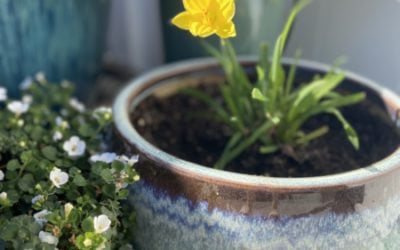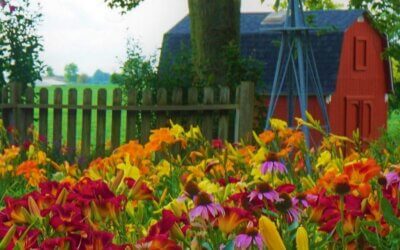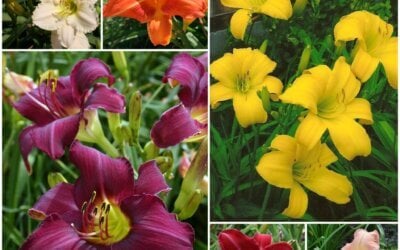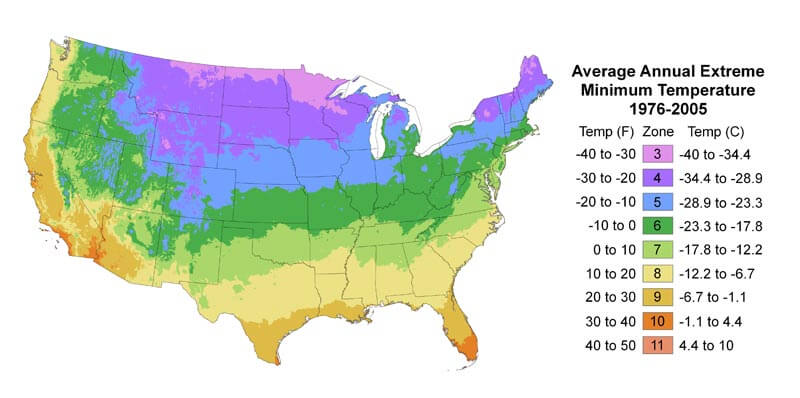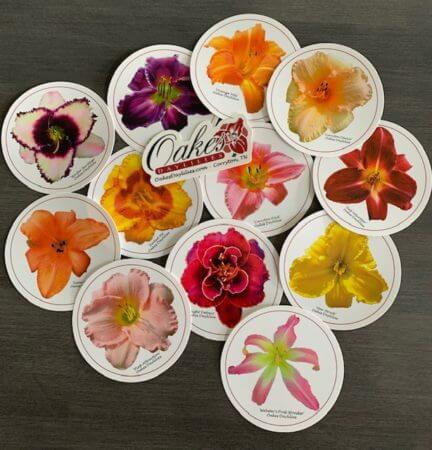We grow a LOT of daylilies! To set you up for success, we add certain information specific to each daylily on our website. One of the things we add is whether a daylily is registered as an Evergreen (EV), Semi-Evergreen (SEV), or Dormant (D) variety. These designations refer to the foliage—the leaves— of the daylily. All daylilies have green foliage in the summer, but if a daylily is registered as an evergreen daylily, it means it will typically keep its leaves all winter. A semi-evergreen daylily will keep its leaves unless it’s planted in an area with harsh winters. In that case, it will lose its leaves and go dormant. A dormant daylily is one that will lose its leaves in the fall and reemerge in the spring.
Knowing a daylily’s foliage type is important when planning your garden: it’s nice to know whether you’ll have a bare spot in the winter due to a dormant perennial. Being aware of your daylily’s foliage type, however, is more useful than just garden planning.
Depending on where you live, the type of daylily you choose may mean the difference between a successful bloom season— or one that isn’t.
Before you buy any daylilies (or any living plant, really) it’s crucial that you know your planting zone. A planting zone is a designation assigned by the USDA that is determined by the average temperature in your very specific part of the world. Some areas are too warm or too cold for certain plants to grow successfully. Your planting zone designation helps educate you on what will grow in your specific zone. If you don’t know which planting zone you live in, the USDA has a handy map you can access here.
Why Foliage Type Matters
Evergreen (E) and Semi-Evergreen (SEV) daylilies
Evergreen and Semi-Evergreen daylilies are those that like to grow foliage all year long. They only flower during bloom season, so you won’t get daylilies throughout the year, but if you live in an area that doesn’t get freezing weather, chances are good that you’ll have daylily foliage throughout the winter. During extreme winter weather, Evergreen and Semi-Evergreen foliage (Semi-Evergreen daylilies are more likely than Evergreen varieties to lose their leaves) may get bitten back or look scraggly.
Dormant (D) daylilies
A dormant daylily is one that needs a respite from the blooming season. In other words, they like to take a winter nap. Although they may look great for a year or two, if they are planted in an area that doesn’t have a cold period, the constant growth and bloom cycle is just too much for them and they wear themselves out. You’ve heard the phrase “no rest for the weary?” That’s a very real conundrum for ill-placed perennials in zones without a dormant period. There are a few dormant varieties that do quite well in warmer zones. Those daylilies are acknowledged on our website.
What Daylilies Can I Grow in Zones 9-11?
That’s easy. Plant perennials that don’t need a dormancy period— such as evergreen and semi-evergreen daylilies. Evergreen and Semi-Evergreen daylilies can stand the heat and thrive in warm zones like 9, 10 and 11 AND perform equally well in areas that get a cold period.
What Daylilies Can I Grow in Zones 3-8?
Thanks to our climate, those of us in more temperate zones like 3-8 can plant evergreen and dormant varieties! If you live on the colder side of this range, your semi-evergreen and, occasionally, your evergreen daylilies may lose their foliage in severe winters. Have no fear! This will not hurt the plant and will not affect summer bloom.
So there it is: the reason why knowing your daylily’s foliage type matters. The great news is that there are lots of gorgeous daylilies to beautify gardens across the nation. The better news? No matter where you live, we’ve got daylilies that can’t wait to get in your garden!
If you are interested in watching a video about what kind of daylilies you should grow, please visit our YouTube channel and watch “Expert Insights: Dormant vs Evergreen Daylilies Explained” or this one “Frost Damaged Foliage: Trim it or Leave it?”


